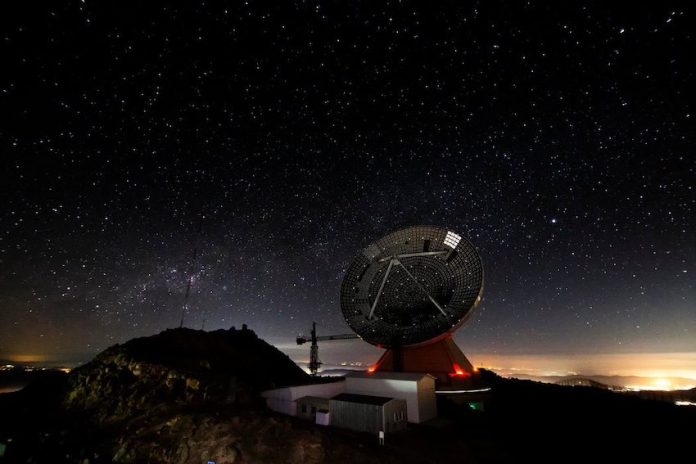A telescope in Puebla deemed “the most important astronomical project in Mexico” is in danger of having the plug pulled on August 31 due to a lack of funding, a group of Mexican and international scientists is warning.
The Alfonso Serrano Large Millimeter Telescope (LMT), a joint project of the United States and Mexico, is the world’s largest single-aperture telescope in its frequency range. Located in Pico de Orizaba National Park, it sits atop the extinct Sierra Negra volcano, the fifth-highest peak in Mexico at 4,580 meters (15,000 feet) above sea level.

With funds about to run dry, a group of scientists that includes leading astrophysicists and astronomers from around the globe has sent a letter to Mexico’s Secretary of Finance and Public Credit (SHCP).
The letter describes the telescope, built over 20 years, as a “flagship” project between Mexico and the United States and how its current funding comes from a National Council of the Humanities, Science and Technology (Conahcyt) program that was approved in 2018 and will soon expire.
“As of September 1, it will find itself without resources to continue operating,” the scientists wrote, adding that pulling the plug would be “a very serious obstacle to meeting the scientific, technological development and training objectives” of the project.
The scientists also noted that this would have a negative impact on the relations and commitments between Mexico and the United States. The telescope is 70% operated by Mexico’s National Institute of Astrophysics, Optics and Electronics (INAOE) and 30% by the University of Massachusetts Amherst, and is part of a global network of telescopes that has been jointly collecting data since 2017. As reported by the news site La Silla Rota, the INAOE requires US $3 million annually to operate the LMT.
Six scientists, including Luis Alberto Zapata, director of the Institute of Radio Astronomy and Astrophysics of the National Autonomous University of Mexico (UNAM), lent their names to the letter, which was supported by another 1,300 signatories.
“We have approached Conahcyt [before the letter] to talk about how to extend the funds, but they have not responded,” Zapata told the newspaper El País last week. “Previously, it was easier to approach the director of Conahcyt and talk to him about your concerns. Now, with the new director [María Elena Álvarez-Buylla Roces], it is more difficult. There is no conversation. It is more of a monologue.”

The GTM — which refers to its name in Spanish, Gran Telescopio Milimétrico — observes radio waves in lengths from approximately .85 to 4 millimeters (.033 to .158 inches). Its 50-meter diameter primary reflector makes it the world’s largest single-dish radio telescope performing observations at those wavelengths, and its high-elevation location gives it great sensitivity.
The GTM has made many significant contributions in exploring the physical processes behind the formation and evolution of planetary systems, stars, black holes and galaxies.
It participated in obtaining the first image in history of the shadow of a supermassive black hole in the center of our galaxy. This resulted in several international awards, such as the Breakthrough Prize in 2020 in Fundamental Physics and the Albert Einstein Medal.
With reports from El País, El Sol de Puebla, Academia de Ciencias de Morelos and Newsweek en Español
